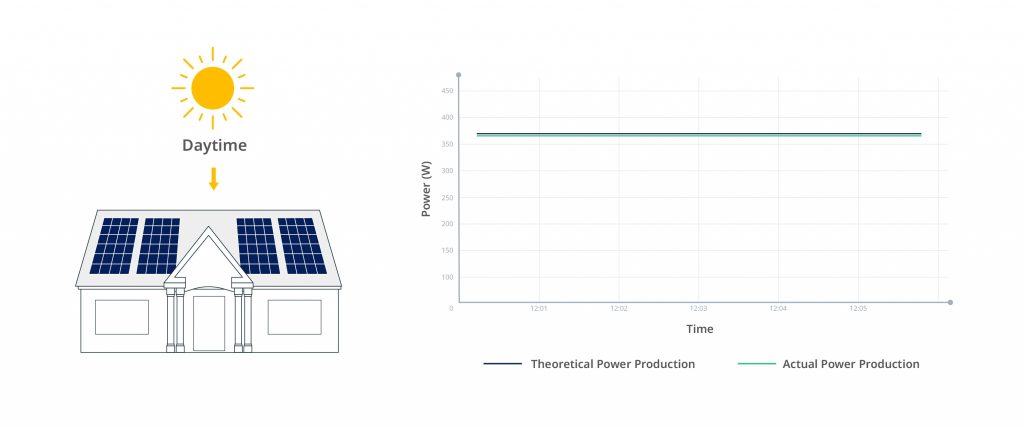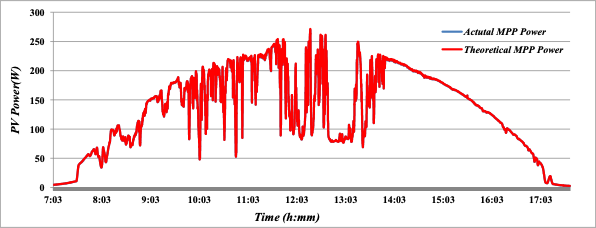What is Maximum Power Point Tracking (MPPT)?
Most installers and solar panel owners keep a close eye on the efficiency of their array, carefully monitoring to make sure that they’re getting the amount of power they were promised.
But many people overlook one of the biggest influences on solar panel efficiency: the performance of the maximum power point tracking controller that sits inside your microinverter.
But what is an MPPT controller? Why is it so important? And how does Hoymiles make sure that our MPPTs keep your solar array running as efficiently as possible?
WHY DO WE NEED MAXIMUM POWER POINT TRACKING?
Let’s start with the basics.
You know that the amount of power that a solar panel generates goes up and down depending on a number of variables, from the temperature of the cell to the strength of the sun.
Most panels can actually generate slightly more wattage than advertised under certain conditions. For example, your panel might promise up to 210W of power, but actually deliver more than that on days when the solar panel is particularly cool and the sun is strong.

Power and voltage characteristics curve of a PV module (400W)
As the graph above shows, these differing levels of irradiation mean that the same solar panel can produce vastly different amounts of power, depending on how much sunlight it receives.
Each dot on the graph above represents the maximum power point of the solar panel for that level of irradiation. So, for example, if a solar panel receives 200W/m2, the most energy it can possibly produce is about 75W — but, depending on the conditions, it might produce slightly more or less than this. If irradiation is 100W/m2, the most the panel can produce is 400W.
An MPPT exists to track the fluctuations in the panel’s maximum power point so that the inverter can generate as much power as possible and improve the ROI of each solar panel.
WHY ARE MICROINVERTERS MORE EFFICIENT THAN STRING INVERTERS?
While there are many reasons that microinverters are often preferable to traditional string inverters — from cost to maintenance and installation time — the biggest advantage of a microinverter is directly related to MPPTs.
A string inverter uses one MPPT to convert power from multiple solar panels in series. This means that domestic installations often only need one inverter. However, it also means that, if one solar panel falls into partial shade, all of the solar panels in that series will start generating less power. If one panel loses 50% of its power generation capability the MPPT will act as though the entire string has been compromised; this could mean your entire array of solar panels loses 50% of its power unnecessarily.
Standard microinverters only connect to one panel at a time and each microinverter has its own MPPT. They’re smaller, so you can have multiple micro inverters on one roof without taking up too much space. Because the panels aren’t connected in series, the reduced efficiency of one panel won’t compromise your other panels.
But we’ve also begun to see the introduction of 2-in-1 and 4-in-1 microinverters. These microinverters can convert power from two or four different solar panels at once.
So how do 2-in-1 or 4-in-1 microinverters convert power without falling into the same trap as string inverters? This is where MPPT becomes important.
Instead of using one MPPT to convert energy from all of the panels, microinverters use module-level MPPT to individually track the maximum power point of each individual panel and isolate panels from each other. This means that a 2-in-1 microinverter will have two MPPTs and a 4-in-1 will have four MPPTs, all operating independently.
This means that one compromised module can’t drag down the performance of all the others. If one module is 50% shaded, the MPPTs for the other panels will ensure that they continue to generate power at peak efficiency.
HOW DO WE MEASURE THE EFFICIENCY OF MPPTS?
To understand the efficiency of an MPPT, we need to assess how well it performs under two conditions.
Static MPPT efficiency is a measure of how well an MPPT performs when conditions are stable — when the solar panel remains at the same temperature, exposed to the same amount of sunlight.

Dynamic MPPT efficiency is a measure of how well an MPPT performs in more real-world settings — when ambient temperatures are rising and falling, the sun is moving in and out of cloud cover, and the internal temperature of the solar panel changes regularly.

Here’s how that looks in practice.
Static MPPT (when the sun’s radiation remains stable)
For a panel with rated power output of 400W, microinverter A has an algorithm that makes the actual output of the module 399.2W.
Microinverter B makes the actual power output of the panel 398W.
The MPPT efficiency of microinverter A (99.8%) is higher than that of B (99.5%).
Dynamic MPPT (when the sunshine changes)Static MPPT (when the sun’s radiation remains stable)
For a panel with a rated power output of 100W– 50W, microinverter A has an algorithm that can perfectly track the panel’s power and make the actual output 99W–49.5W.
The algorithm of microinverter B doesn’t track the module power very well, so the actual output would be 90W–45W. As a result, we can see that microinverter A is higher than 90% of B.
HOW WELL DO HOYMILES MPPTS PERFORM?
At Hoymiles, we’ve spent a long time making sure that the MPPTs in our 4-in-1 microinverters transfer energy as efficiently as possible.
In laboratory tests, our dynamic MPPT delivered 99.5% efficiency of power transfer, while our static MPPT delivered 99.8% efficiency.
To check how our MPPTs would perform in the real world, we also conducted experiments in the field, in cloudy conditions when the amount of sunlight falling onto a solar array can fluctuate extensively.
As the chart below shows, our MPPTs managed to perfectly capture and track the maximum power point of the solar panel.
The chart shows power production during the whole day.
● The red line shows the actual MPP of the solar panel throughout the day
● The blue line shows the MPP predicted by the MPPT. Because the MPPT was predicted perfectly, the blue line perfectly overlaps with the red line.

CONVERT MORE POWER SAFELY WITH 4-IN-1 MICROINVERTERS
At Hoymiles, we’ve optimized the MPPTs in our 4-in-1 microinverters for safety and efficiency — allowing you to generate more power and reduce the number of microinverters in your solar array, without reducing the number of MPPTs.
That means you’ll convert more power while taking up less space, and still be able to maximize the ROI of your solar installation. And, as a result, rest easy knowing that your solar array is as safe, reliable and efficient as possible.




